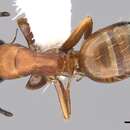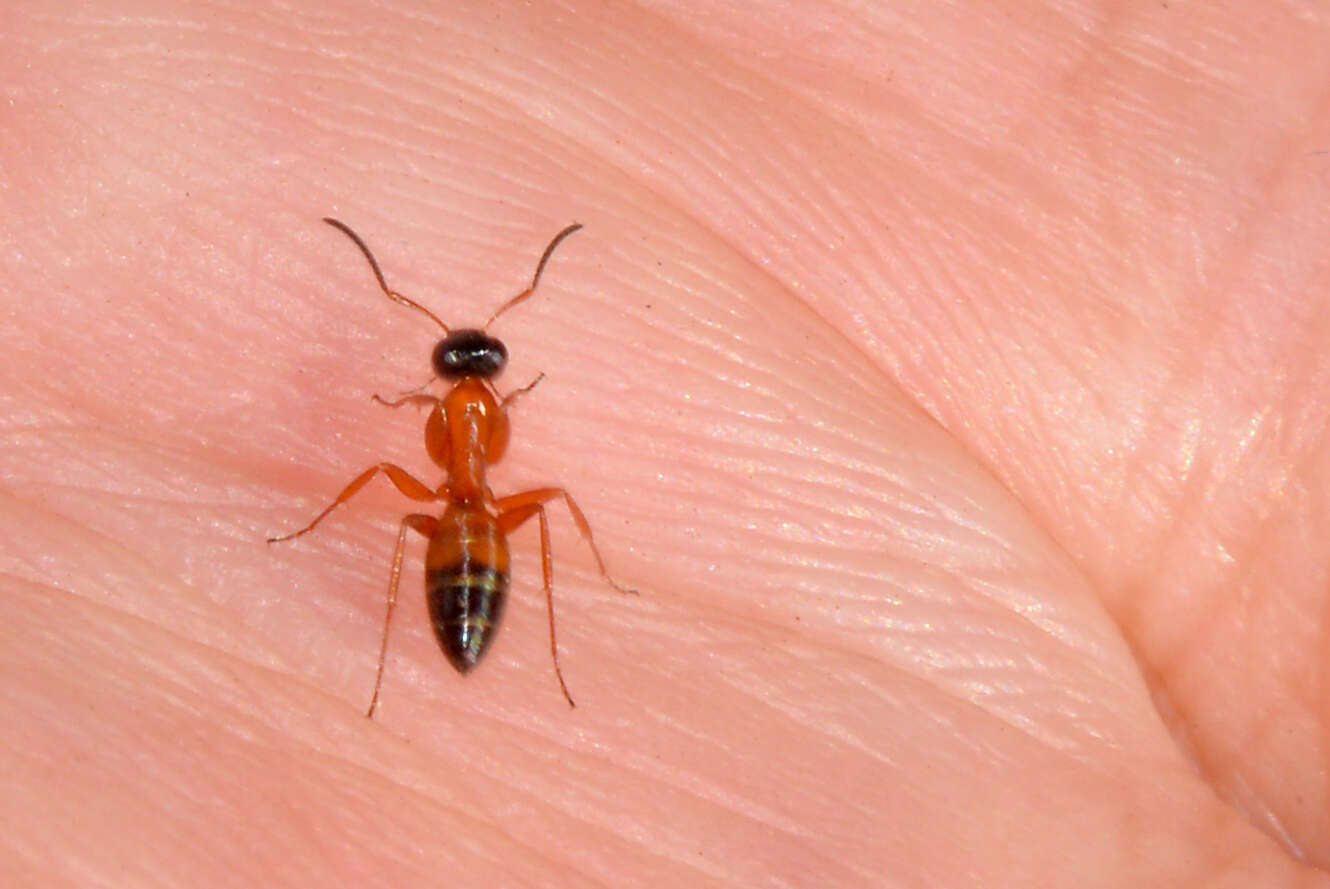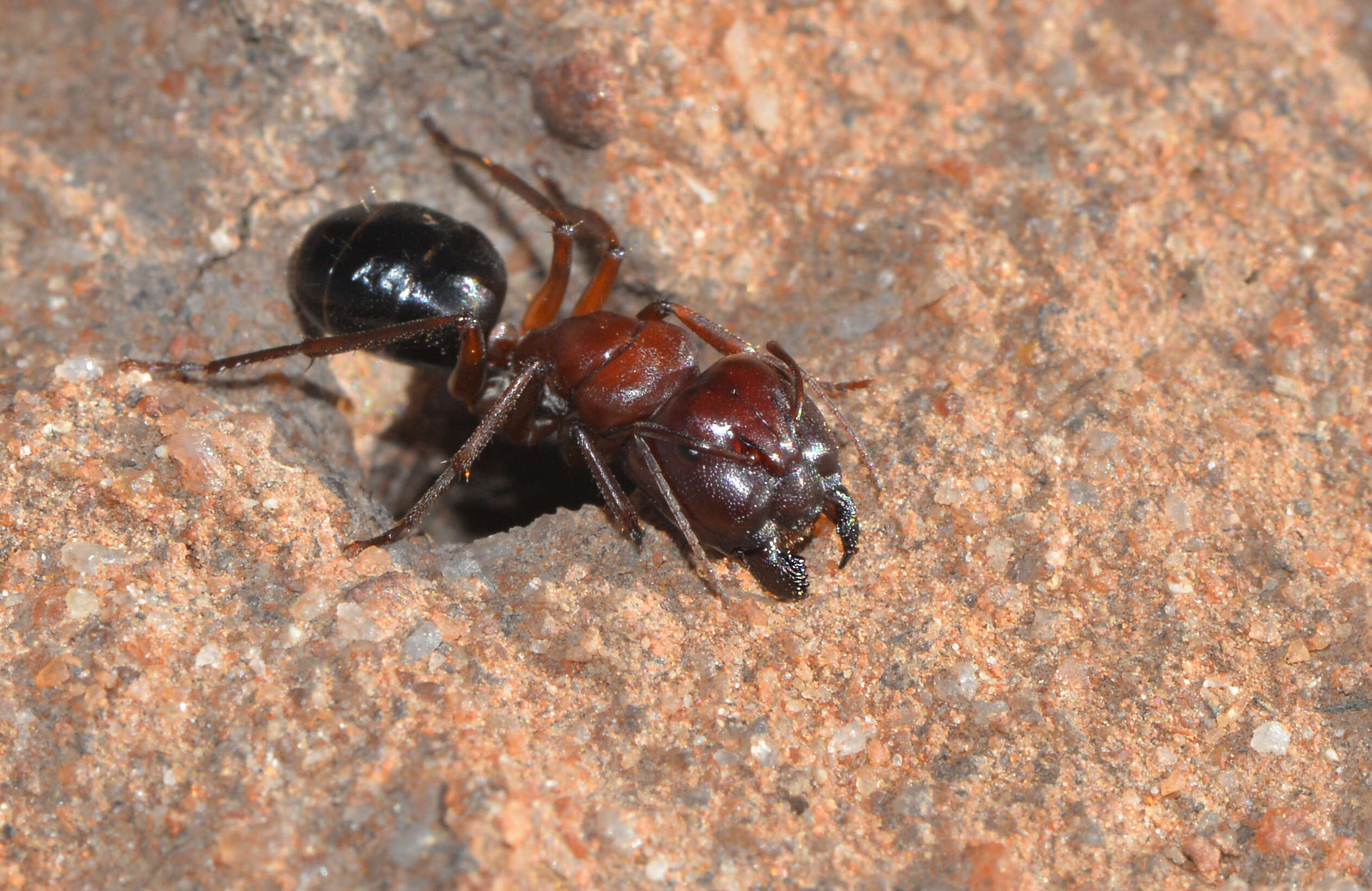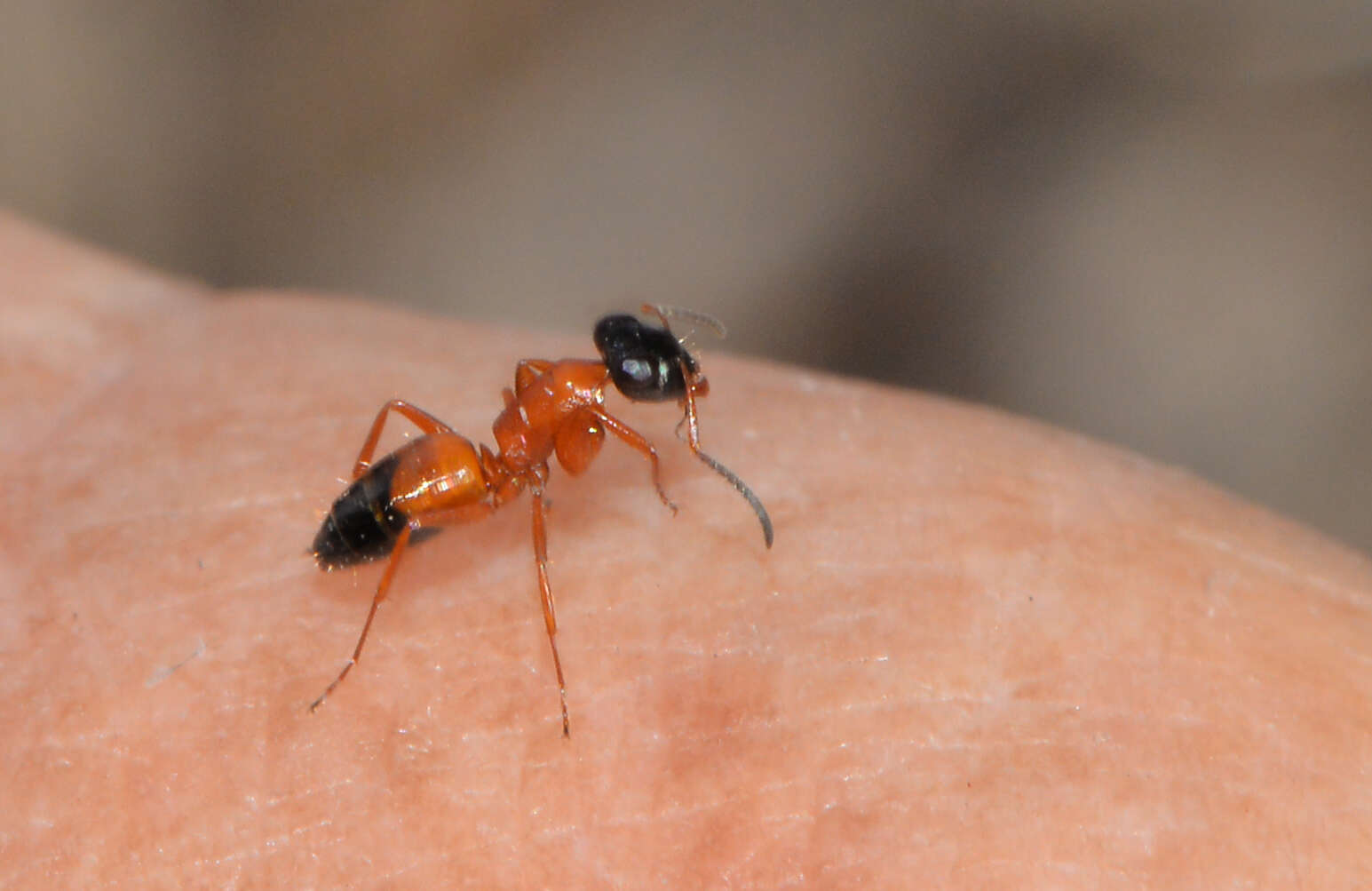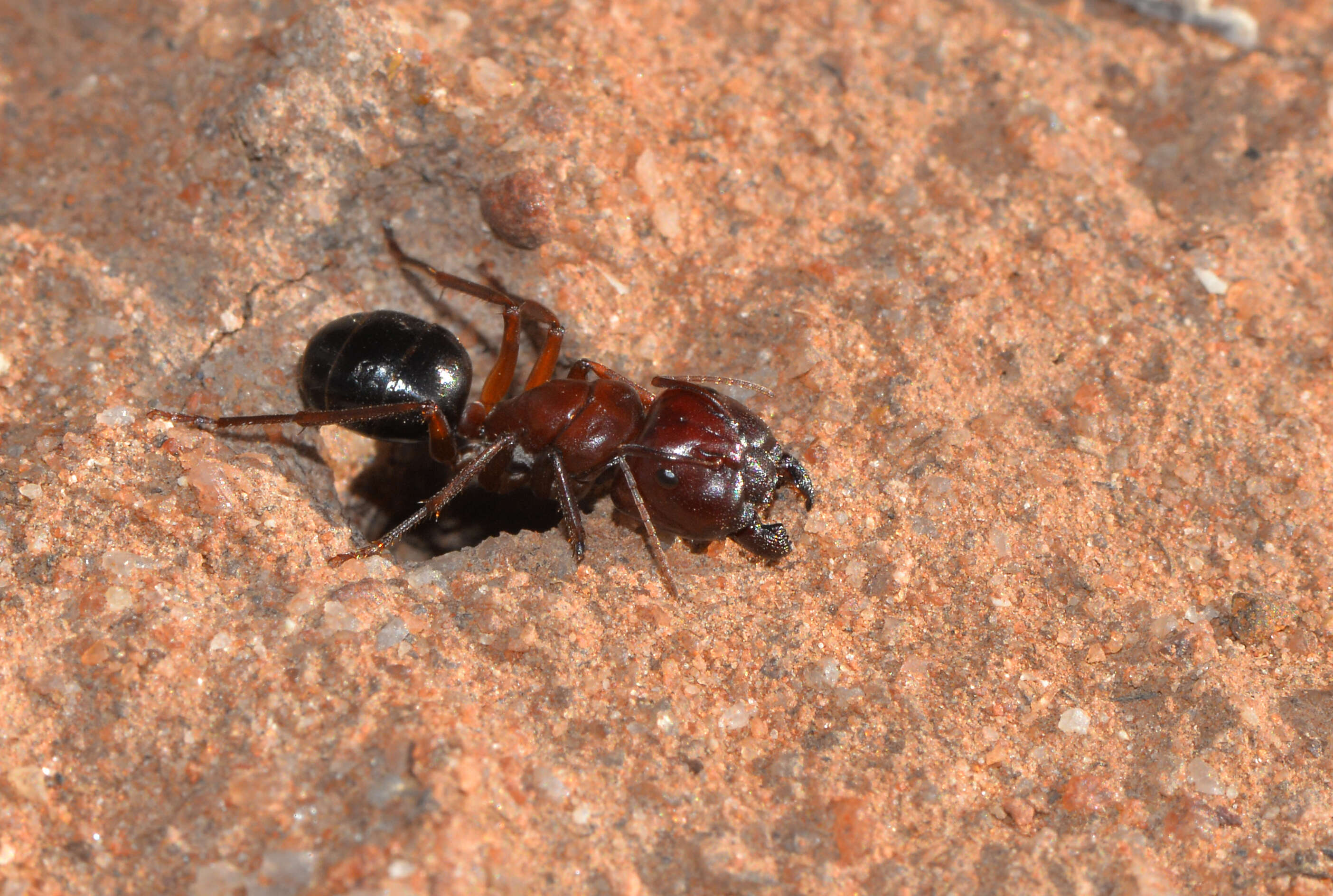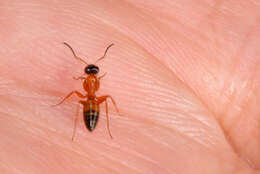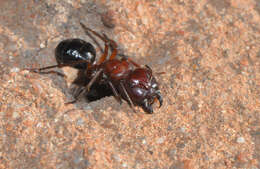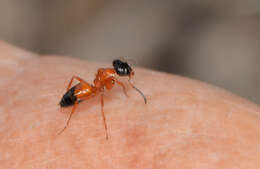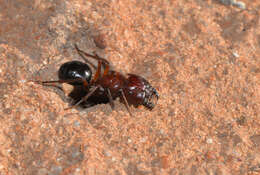-
These ants speed run up and down tree trunks. Notice they have enlarged front femurs. Dr Brian Heterick - Research Associate | Environment and Agriculture School of Science"This ant is Opisthopsis rufithorax Emery, a close relative of the sugar ants (Camponotus). You will note the large eyes on the corners of the head: these ants have excellent vision and will evade an oncoming human by darting around the far side of a tree trunk. You would also have noticed the strange, jerky way these ants progress - they are called 'strobe ants' in some quarters because of this."Photos: Fred
-
These ants speed run up and down tree trunks. Notice they have enlarged front femurs. Dr Brian Heterick - Research Associate | Environment and Agriculture School of Science. "This ant is Opisthopsis rufithorax Emery, a close relative of the sugar ants (Camponotus). You will note the large eyes on the corners of the head: these ants have excellent vision and will evade an oncoming human by darting around the far side of a tree trunk. You would also have noticed the strange, jerky way these ants progress - they are called 'strobe ants' in some quarters because of this." Dr Brian Heterick - Research Associate | Environment and Agriculture School of SciencePhotos: FredPhotos: Fred
-
What a beauty standing guard over it's hole. "I can't be precise with the ID, as the two most likely candidates are distinguished by the length and angle of elevation of the small setae on the hind tibia! What I can say is that the ant is a major worker in the Camponotus ephippium group. The ant is most likely to be C. ephippium (F. Smith) itself, but it could be C. capito ebeninithorax Forel. Major workers of several species in this group use their bulky head as a living bung to block the small entrance hole. If you poke a grass stem or small twig down the hole, you can withdraw it with the guarding major holding on with her mandibles like grim death! " Dr Brian Heterick - Research Associate | Environment and Agriculture School of Science.
-
These ants speed run up and down tree trunks. Notice they have enlarged front femurs. Dr Brian Heterick - Research Associate | Environment and Agriculture School of Science "This ant is Opisthopsis rufithorax Emery, a close relative of the sugar ants (Camponotus). You will note the large eyes on the corners of the head: these ants have excellent vision and will evade an oncoming human by darting around the far side of a tree trunk. You would also have noticed the strange, jerky way these ants progress - they are called 'strobe ants' in some quarters because of this."Photos: Fred
-
What a beauty standing guard over it's hole. "I can't be precise with the ID, as the two most likely candidates are distinguished by the length and angle of elevation of the small setae on the hind tibia! What I can say is that the ant is a major worker in the Camponotus ephippium group. The ant is most likely to be C. ephippium (F. Smith) itself, but it could be C. capito ebeninithorax Forel. Major workers of several species in this group use their bulky head as a living bung to block the small entrance hole. If you poke a grass stem or small twig down the hole, you can withdraw it with the guarding major holding on with her mandibles like grim death! " Dr Brian Heterick - Research Associate | Environment and Agriculture School of Science.

